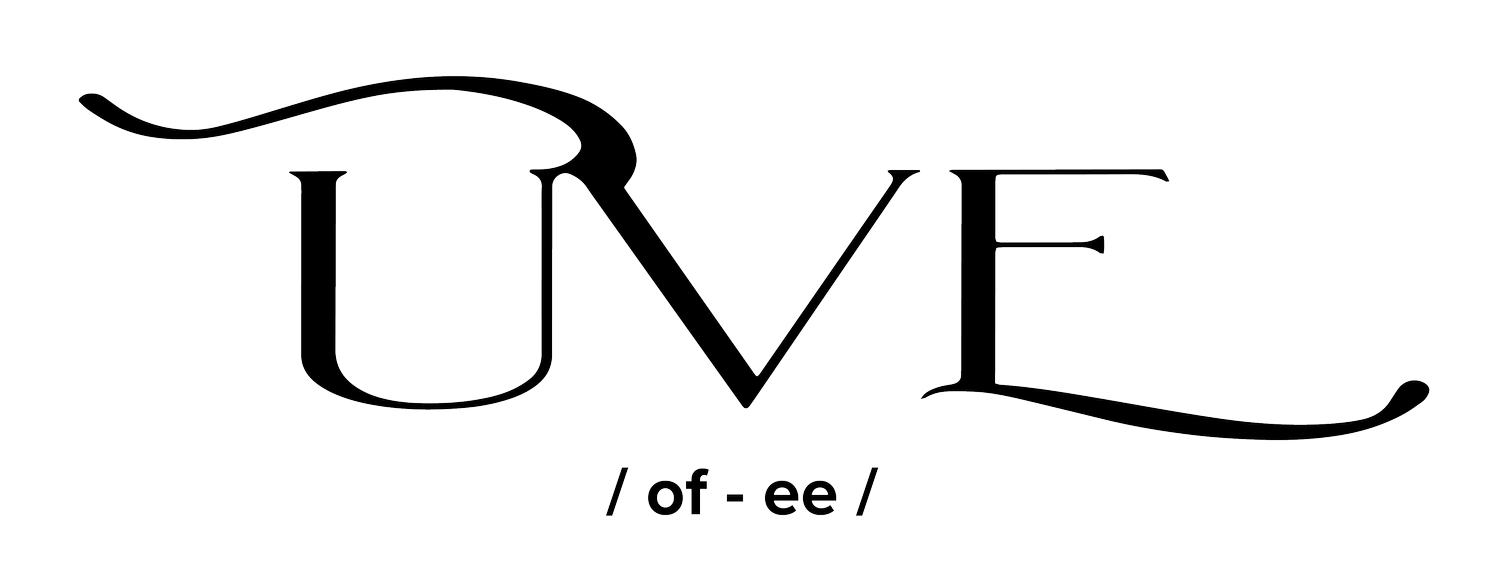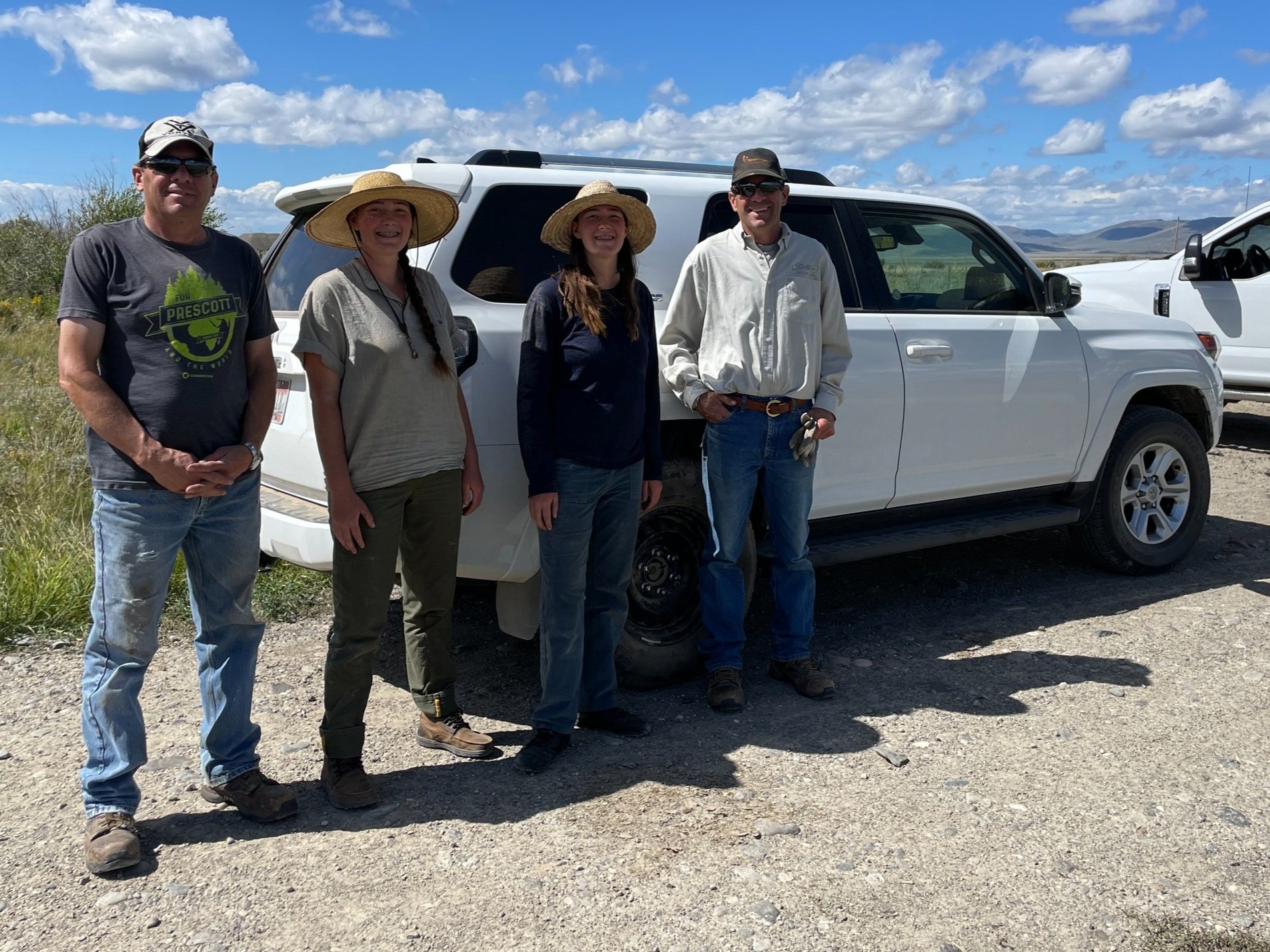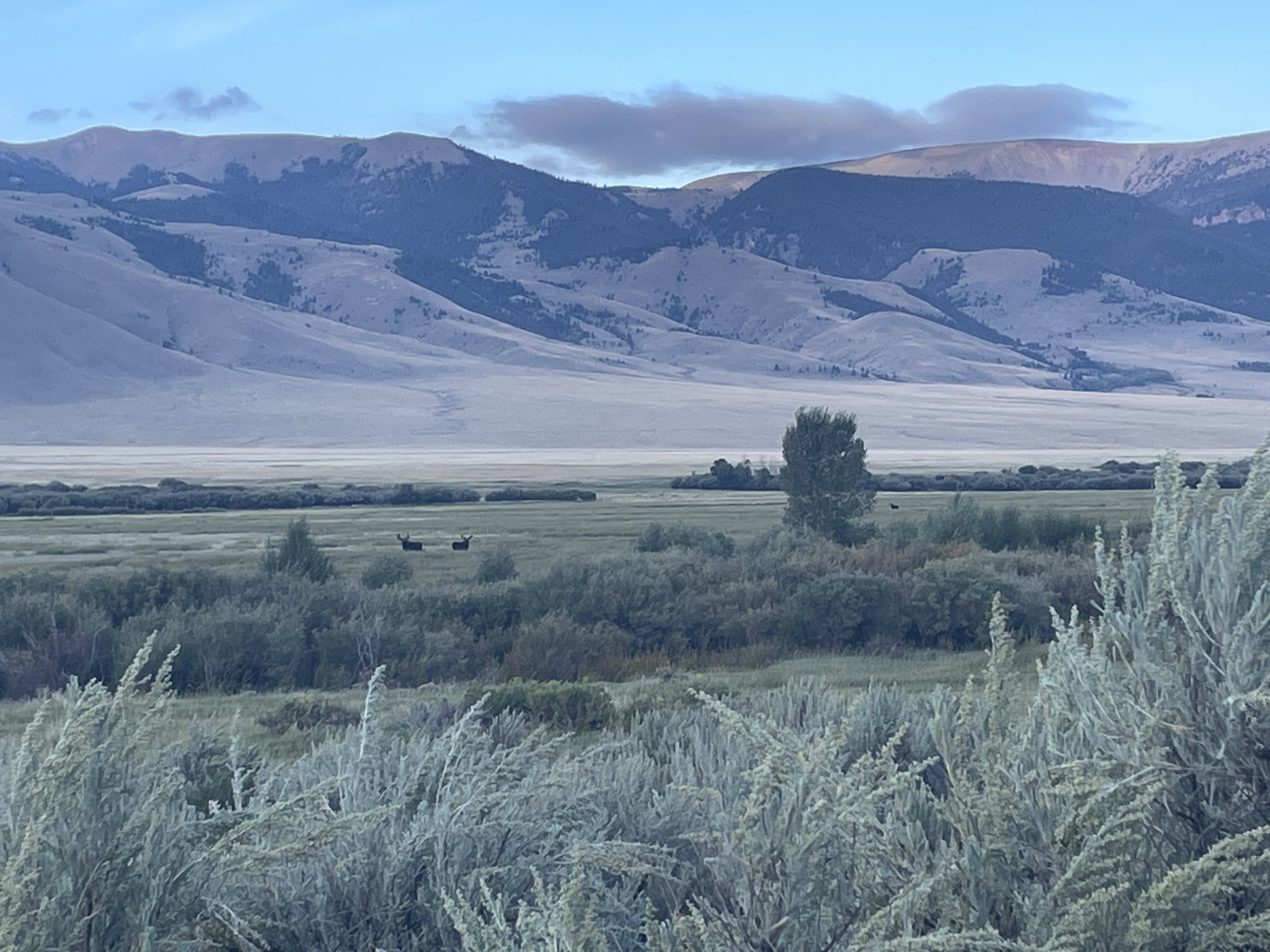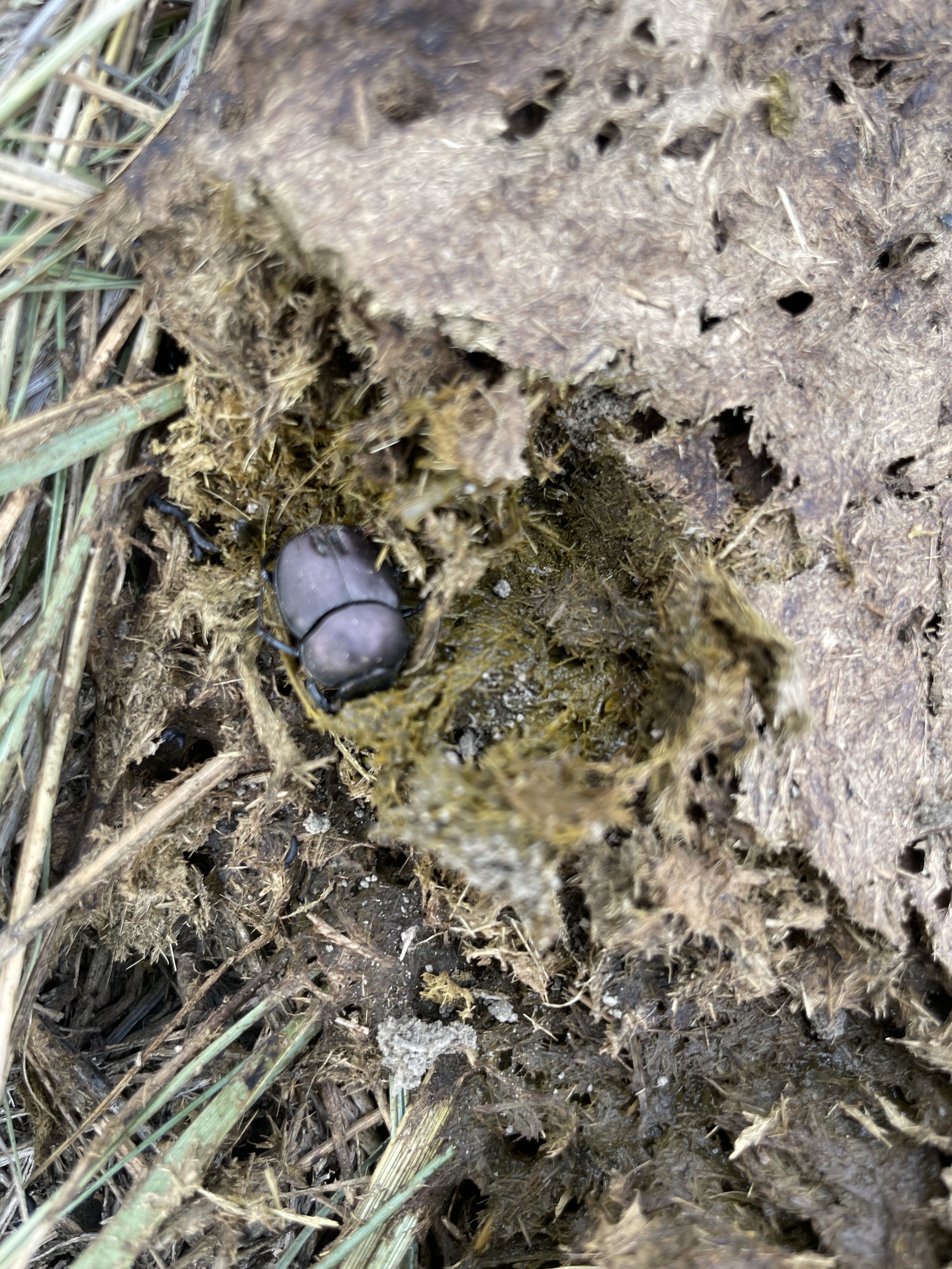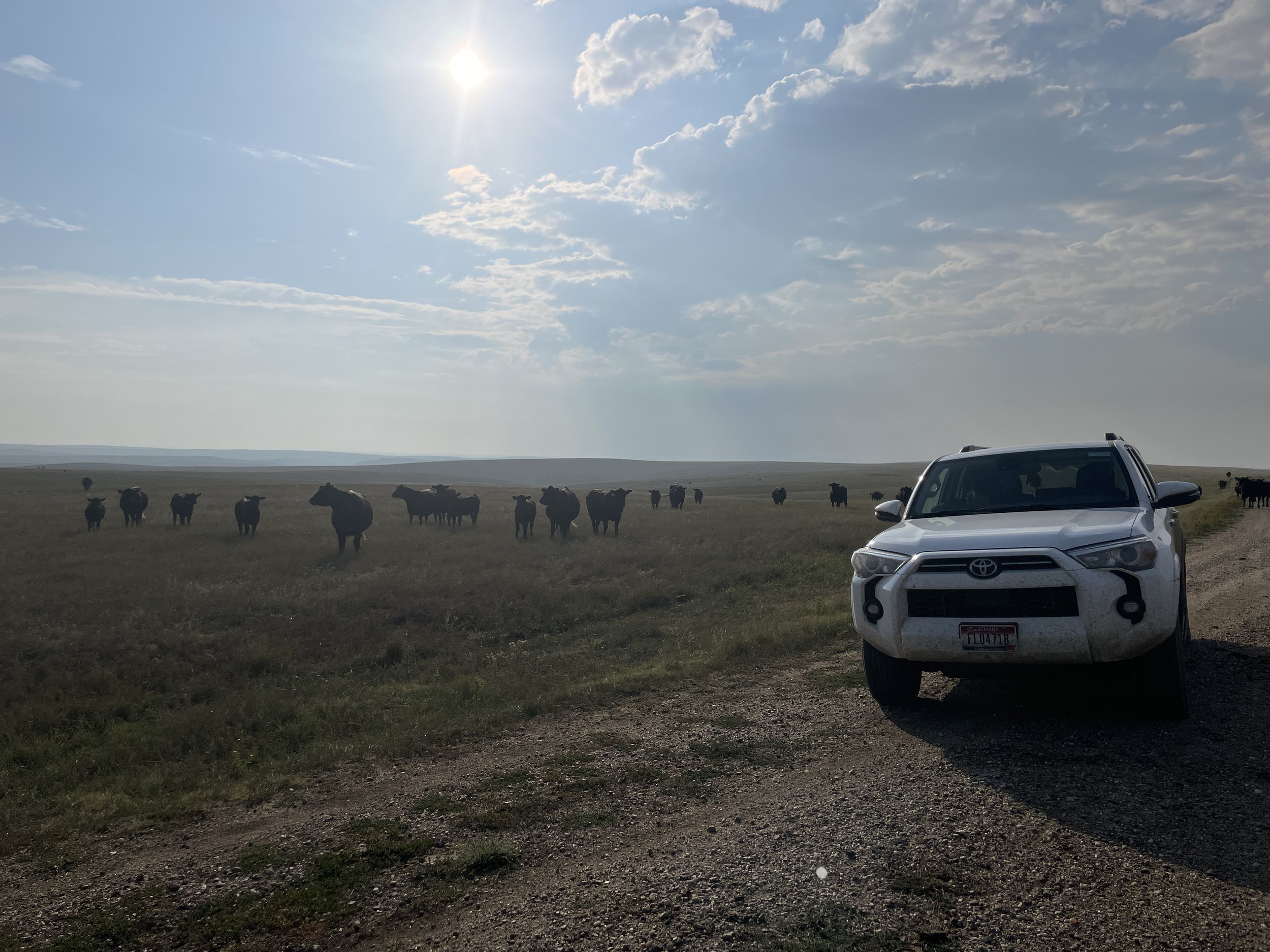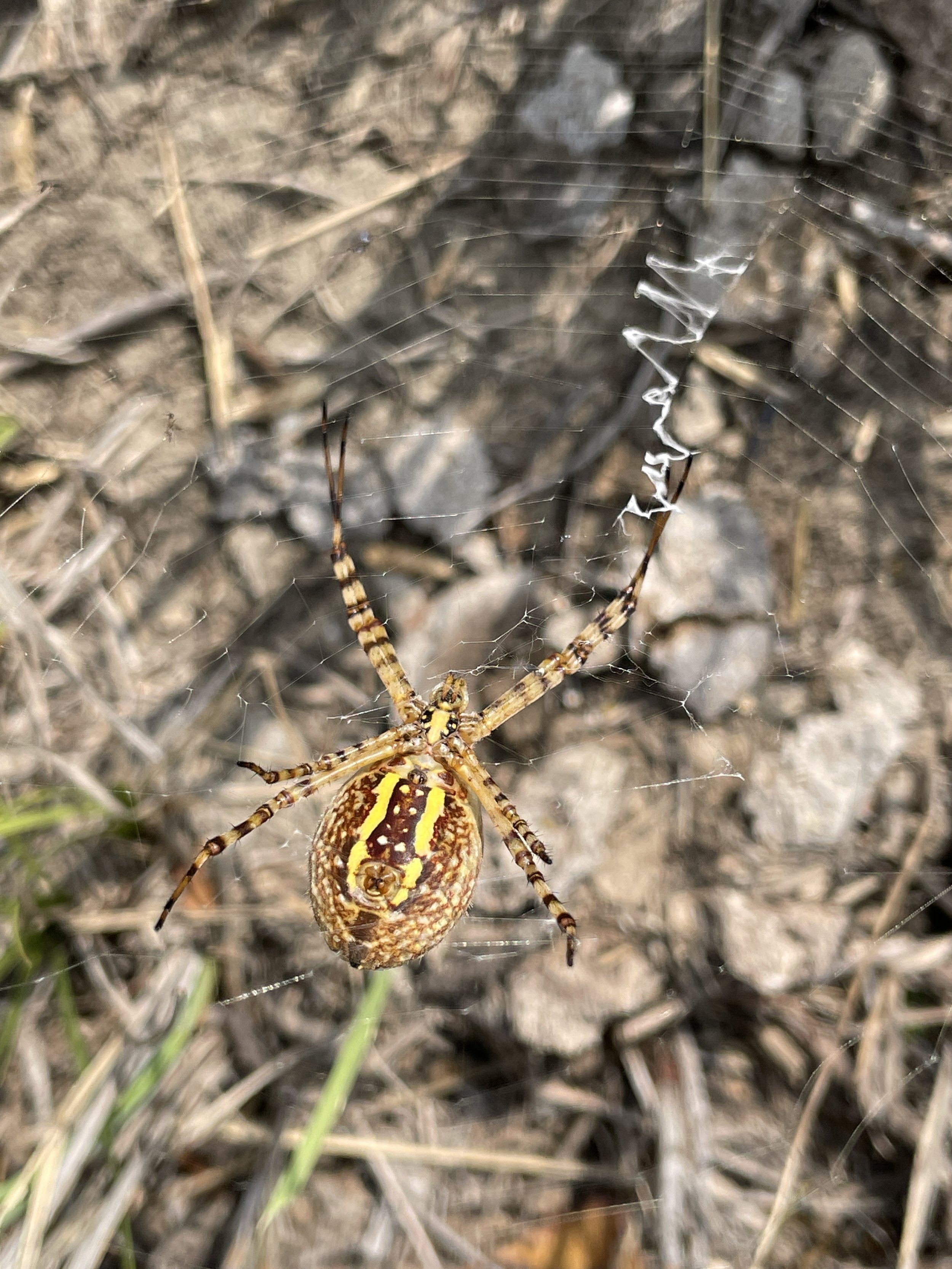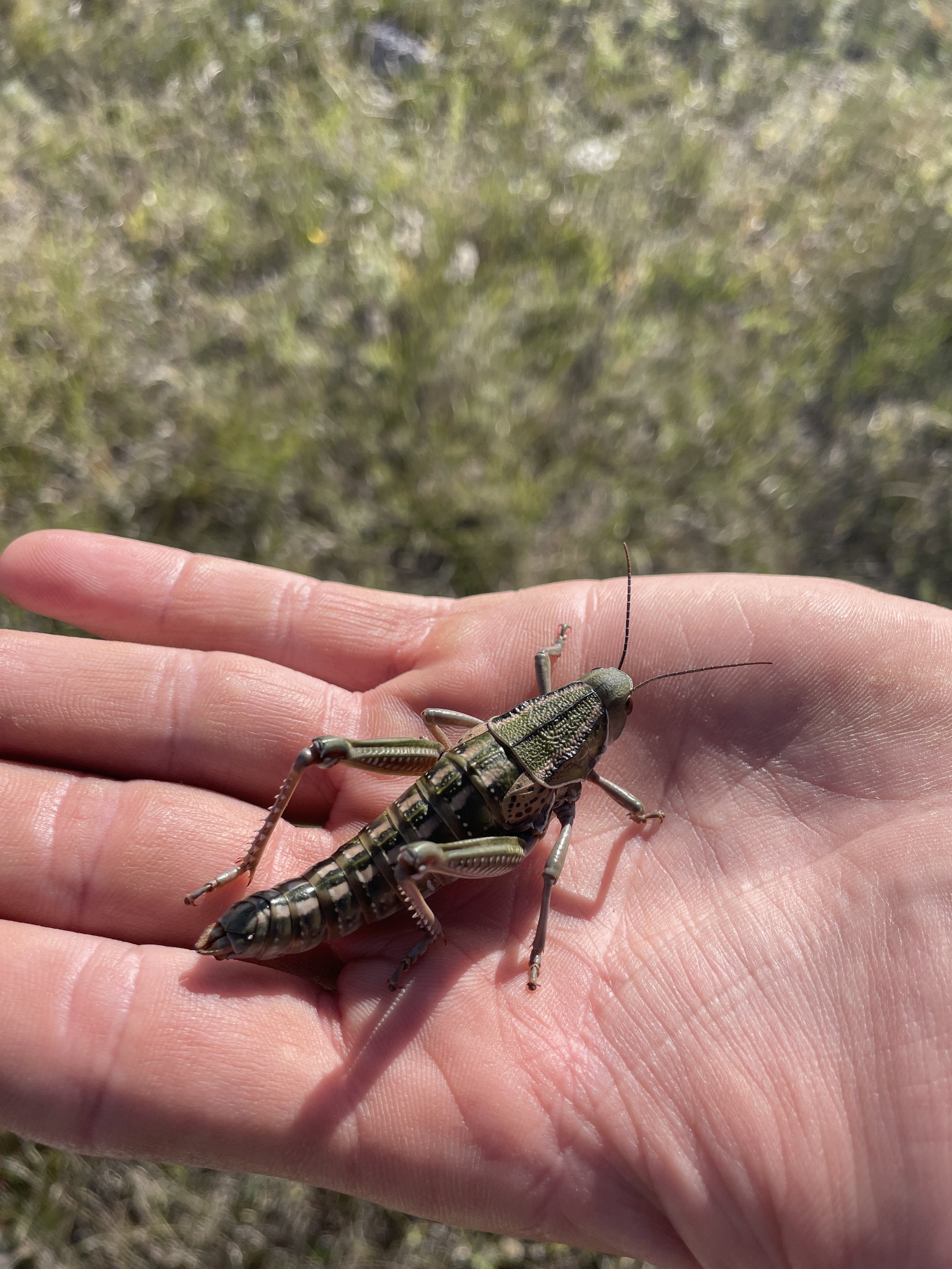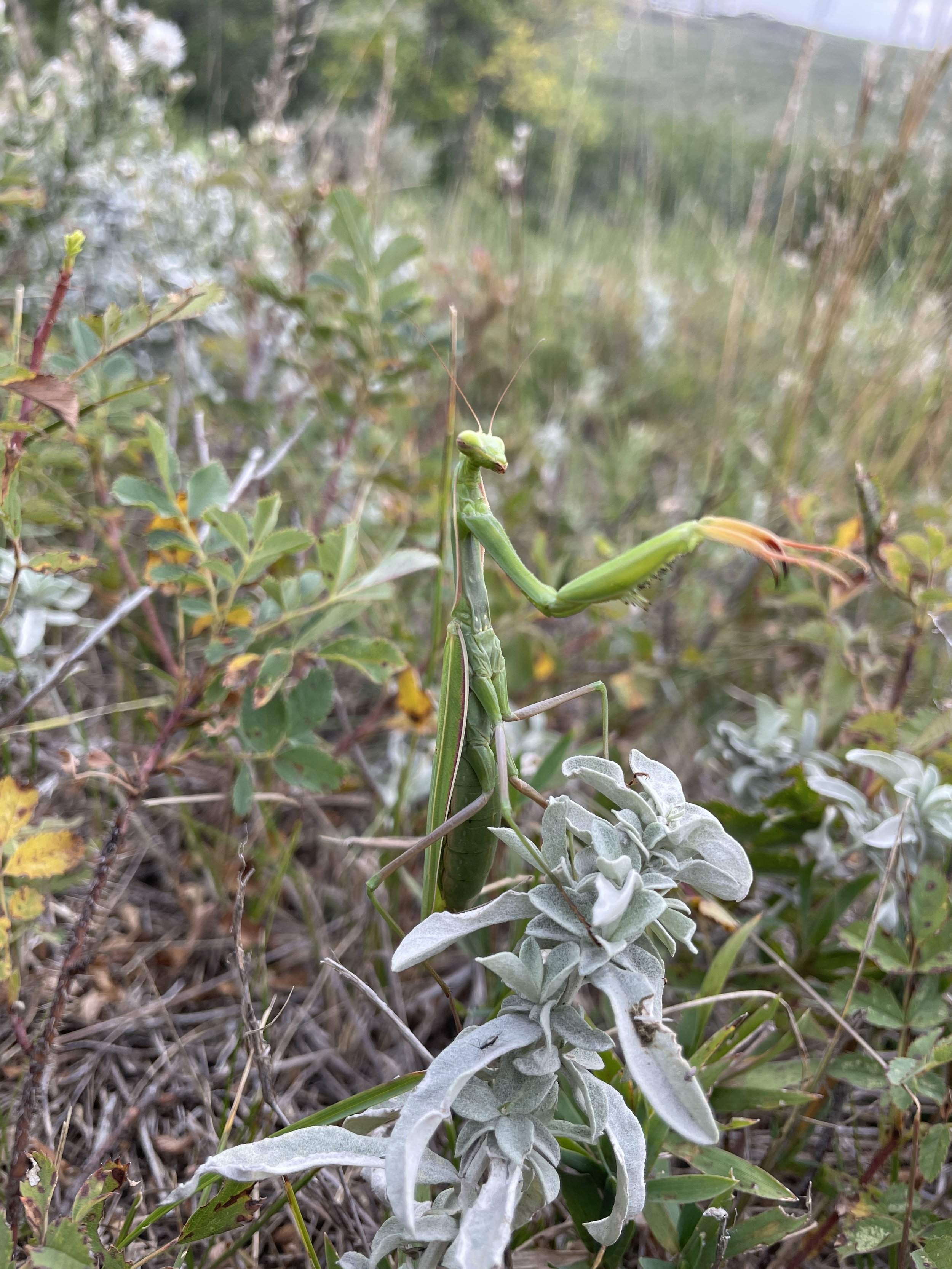Observations from the Field
10 Lessons Learned While Ecological Outcome Verification Monitoring Across the Northern Great Plains
By Rachel Lohof Larsen
On a sunny late August afternoon, I headed East from my home in Idaho, toward Montana with a rental car, packed to the brim with tools, clothes, coats, and a cooler full of groceries to meet our clients and my monitoring crews. With the audacious goal to establish baseline monitoring on seven landbases, one in Western Montana and six on tribal lands in South Dakota before the end of the growing season, the month of September was also packed to the brim.
Here are 10 valuable insights I gained leading our EOV monitoring expedition across Montana and South Dakota landscapes.
1. How many pairs of identical twins does it take to change a flat tire?
The answer is two. I don’t know the statistical probability of waving down a pair of identical twins while struggling through a tire change on a rental vehicle in the rural Centennial Valley of Montana, but in my experience, it is 100%. Monitors (and identical twins) Fiona, and Laura Quick, and I had timely assistance with our flat tire from a pair of lovely gentlemen from Lima, Montana, also identical twins.
2. Bullwinkle is great, but have you met my friend, Steve the dung beetle?
Don’t get me wrong, the sight of eight moose gracing majestic creekside meadows or the raised rumps of a pronghorn herd on alert is exciting, it's easy to get swept away in awe of charismatic megafauna but microfauna is important, too. Our insect pals are vital to nutrient cycling, the bodies of dead bugs are a significant source of Nitrogen in some ecosystems! Take a moment and look around you, you may find a new variety of dung beetle, a garden spider putting a hurt on grasshoppers, a praying mantis, or a LARGE prairie lubber doing their part to support the ecosystem as a whole.
3. What is my favorite bird?
If your favorite bird isn’t the Western Burrowing Owl, we can still be friends, but I will question your judgment. The population density of burrowing owls serves as an indicator of ecosystem health; they require healthy prairie dog populations, which are negatively impacted by rodenticides, pesticides, and habitat fragmentation. Plus, they're really dang cute.
4. Approximately, 25% of vehicles on the road today are white.
This includes ranch vehicles, it's likely you’ll attract attention driving through cattle pastures in your white, rental Toyota 4Runner.
5. Perennial grasslands are amazingly resilient and brimming with diversity.
You can see, hear, and feel the life around you on a perennial prairie. Did you know research indicates that cropland seeded with prairie strips has more pollinators, more birds, and greater water retention than traditional cropland?*
6. Routine is a blessing and a curse.
In our daily lives, routine provides us with the scaffolding to support healthy lifestyle choices and regular exercise, but routine can also trap us in habits and practices that no longer serve us. The same is true for our land management practices. It is easy to fall into a seasonal rhythm repeated year after year, never examining the impact these repeated practices have upon the landscape. I believe monitoring provides land stewards with a lens to examine their routines, like the use of inputs.
7. Is it necessary or is it a habit?
The decision to utilize pour-on and other insecticides to control flies is a common routine with many livestock operations, motivated by a desire to be humane. It is troubling to see animals suffering from negative interactions with pests and parasites, but these -icides have cascading negative effects on ecosystem health. They impact beneficial insects like dung beetles, just as much as they affect pesky flies.
8. A well-fed monitoring crew is a happy monitoring crew.
Hangry is officially recognized as a word in the Oxford American English Dictionary. A recent combination of hungry and angry, it is an adjective meaning, “bad-tempered or irritable as a result of hunger.” It is a real word and a real phenomenon, so pack snacks accordingly.
9. On that note, trust (but verify) Google’s restaurant hours.
After not one, but three attempts to dine at closed restaurants, I recommend taking a moment to call that dining establishment that received great reviews on Google. You will save yourself time and avoid the aforementioned hangry decision-making.
10. Do you have a favorite grass?
I waiver between the evocative eyelashes of Blue Grama and the elegant simplicity of Sideoats Grama, both nutritious, warm-season grasses, native to the Northern Great Plains ecoregion. It is also a fun question that engages land stewards in the monitoring process. What is your favorite grass and why?
If you want to find your favorite grass or meet a family of burrowing owls along with me next year, keep your eyes peeled for our upcoming EOV monitor training opportunities.
Rachel Lohof Larsen is the UVE Community Network Facilitator. Rachel is a fifth-generation rancher, mom, wife, and cowgirl. Originally from Montana, Rachel has a background in Environmental Science and is a graduate of Nicole Masters’ Integrity Soils CREATE program. She practices her stockmanship skills in Southwestern Idaho with her husband, Guy, and their Kelpie dogs. You can follow her @sagebrushsupply
References:
*Shulte, L., Niemi, J., Helmers, M., and Witte, C., 2017. "Prairie strips improve biodiversity and delivery of multiple ecosystem services from corn-soybean cropland" PNAS 114 (42) Pgs. 11247-11252
